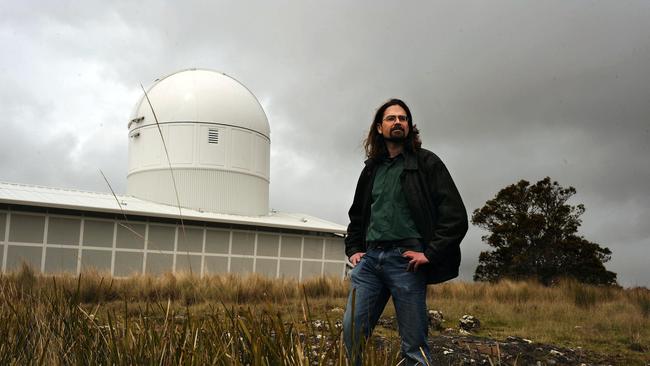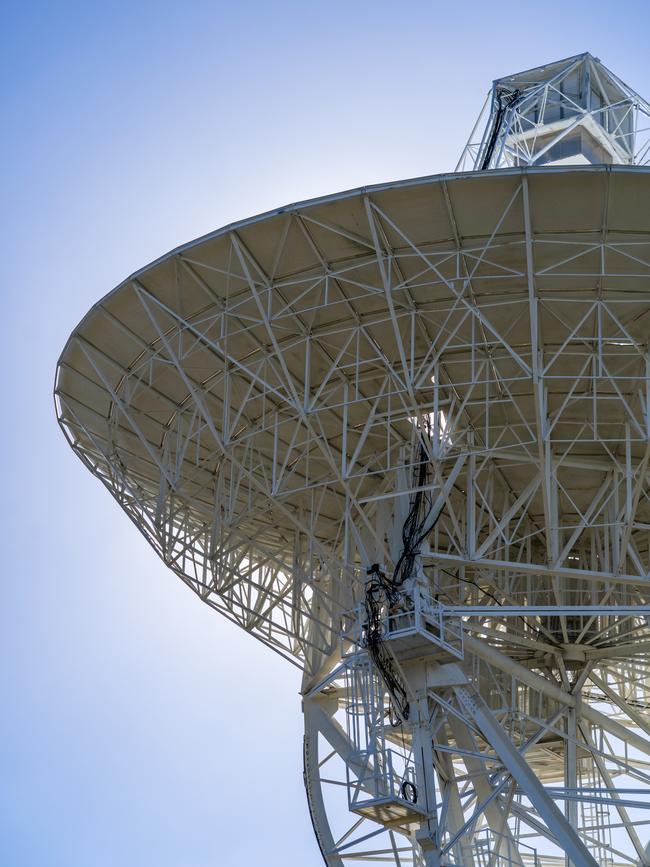UTAS astronomers support Jupiter mission while developing satellite tracking service
It is an exciting time for astronomers at the University of Tasmania, who are supporting the an upcoming Jupiter mission, while also developing a dedicated satellite tracking service.
Tasmania
Don't miss out on the headlines from Tasmania. Followed categories will be added to My News.
TASMANIA’S expanding space-tracking capabilities will not just help find life beyond Earth – it will help protect life on Earth, program leaders say.
It is an exciting time for astronomers at the University of Tasmania, who are supporting the European Space Agency’s (ESA) upcoming Jupiter mission, while also developing a dedicated tracking service for Earth-orbiting satellites.
Dean of Natural Sciences at the uni, Simon Ellingsen, said two new antennae, funded by the Australian Space Agency, will communicate with CubeSats, which are miniature satellites used by universities and companies for research.
“With CubeSats we have the potential to have more of our own missions in Australia, so we can direct them when things are going on like bushfires and flooding,” Prof Ellingsen said.
“Even monitoring of fishing in territorial waters, drought, crop progress, deforestation, defence-related monitoring can all be done with CubeSat missions.”
Astrophysicist Andrew Cole, who runs the Greenhill Observatory in the Southern Midlands where a new antennae will be erected, said they would also allow for two-way communications with spacecraft in orbit around Earth.

“It gives us the ability to provide communications for spacecraft with crew as opposed to just data downlink from robotic satellites,” Associate Professor Cole said.
“That could be routine resupply missions for the international space station or crude concept missions building towards something like a moon landing in the future.”
Meanwhile, local astronomers based at the university’s Mt Pleasant Observatory near Hobart, including Guifré Molera Calvés, are preparing to support the ESA’s spacecraft mission to Jupiter’s moons scheduled for 2022. The spacecraft called JUICE (Jupiter Icy Moons Explorer) will take seven years to reach Jupiter, where it will spend a few years making observations of the giant gaseous planet and three of its largest moons, Ganymede, Callisto and Europa.
Dr Molera Calvés said Tasmania had “an enormous advantage” when it came to space research because of its soon-to-be-four antennae in Tasmania, one antenna in South Australia, one in Western Australia and one in the Northern Territory.
“University of Tasmania is the only research university in the world to operate such a large array of antennas,” he said.
“Tasmania has great atmospheric conditions and [is an] ideal location for space studies.”
The Tasmanian antennae will relay vital information from JUICE during its seven-year voyage through the solar system.

Dr Molera Calvés said the mission would help answer the question of whether simple life exists in our solar system beyond Earth.
“Europa is one of the moons of Jupiter and it has been suggested to have a habitable environment,” he said.
“It is believed to have a large amount of ice water on its surface and research indicates that some form of microscopic life could exist under the ice sheet. JUICE mission is set to search for answers to some of these questions.”
Dr Molera Calvés, who is originally from Barcelona, started working with radio telescopes and space missions while doing his doctoral studies in Finland and he has since worked in Berkeley (California), the Netherlands and Finland.
He now lives in Tasmania with his young family and is lucky enough to have a job that constantly excites him.
“I tend to live in the present and I often feel like my favourite career moment is always happening right now,” he said.
“I am quite confident that we will not find any form of intelligent life as we know it, but it is very possible that we do find something in the Jupiter’s moons. Hopefully, we will learn more about our solar system and the possibilities for accommodating life outside the Earth.”
He said that was why the university is also involved in the Australian Space Agency’s Moon to Mars project that aims to support NASA’s efforts to get humans back to the moon and to journey to Mars.


